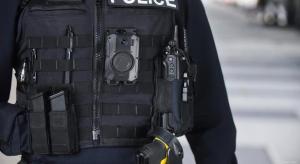- YourGovernment
-
OurCommunity
-
- About Tualatin Advisory Committees Animal Services Community Involvement City Codes City Council City Projects
- Community Crime Reports Customer Service Request Explore Tualatin Now Fire Library Municipal Court Tualatin Today
- Parks & Recreation Passports Permits & Forms Planning & Zoning Police Volunteer Tualatin Moving Forward
-
-
ForVisitors
-
- Parks, Greenways, Recreation and Library Library Parks Public Art Parks and Recreation
- Shopping, Dining, and Entertainment Chamber of Commerce
- Community Events Community Theatre Pumpkin Regatta Special Events
-
- DoingBusiness
-
HowDo I?
-
- Apply for a Job Apply for an Advisory Committee Contact the City Council Get a Copy of a Police Report File a Records Request Find Forms
- Find Planning & Zoning Find Public Transportation Find the City Code Get a Business License Get Email Subscriptions/Notifications Locate City Offices
- Contact the City Pay My Traffic Fine Pay My Water Bill Reserve a Facility Sign Up for a Recreation Program Search the Website Volunteer
-
Body-Worn Camera Program
Tualatin Police Department recognizes the importance of transparency and accountability, which prompted a feasibility study into the implementation of our own body-worn camera program.
"Law enforcement agencies across the United States and throughout the world are using body-worn cameras (BWCs) as a promising tool to improve evidentiary outcomes, and enhance the safety of, and improve interactions between, officers and the public. BWCs also are proving to be an important tool to assist broader law enforcement, problem-solving, and community engagement strategies within jurisdictions.
BWCs can be highly effective resources, providing an unalterable audio and visual record of interactions that capture empirical evidence in the event of a crime, police-citizen interaction, or use-of-force incident." (Source: Bureau of Justice Assistance (BJA))
Tualatin Police Department officially implemented a body-worn camera program, outfitting all Tualatin officers with body-worn cameras at the end of May 2022. As we move forward with this program, we do so with four important guiding principles in mind.
Guiding Principles
- Improve accountability and transparency
- Strengthen community trust and relationships
- Promote officer safety and deescalation opportunities
- Enhance the quality of investigations and evidence gathering
The purchase of body-worn cameras is very costly. A portion of that cost will be funded through generous grants from CityCounty Insurance Services as well as the Department of Justice.
As part of the Tualatin Police Department’s commitment to enhance accountability, openness and transparency, we are providing this informational website for community awareness about the program.
Things to Consider
Body-worn camera footage can be a useful tool in providing clarity on police interactions, however it does have limitations. The camera video cannot provide all the information needed to make a fair and accurate judgment about police activity. Video is part of the investigation; it does not replace a thorough investigation. Body-worn cameras are not a substitute for an officer's reasonable beliefs and perceptions, and cannot account for the physiological responses during critical incidents, such as tunnel vision and auditory exclusion. Body-worn camera recordings should not be viewed as the sole measure of truth or as the totality of the circumstances. These cameras and their inherent limitations only capture video and audio evidence from the camera’s physical position on the scene and not necessarily from the user’s overall perspective.

